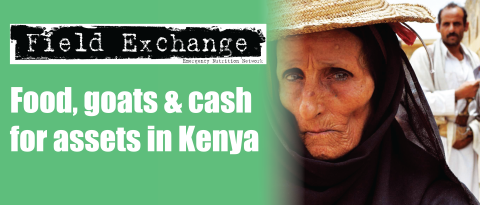Scaling up ORS and zinc treatment for diarrhoea reduces mortality
Summary of editorial1
With most countries still not on track to achieve millennium development goal 4 - that of reducing child mortality by two thirds from 1990-2015, a recent editorial in the British Medical Journal (BMJ) highlights the need to tackle the treatment of diarrhoea. The authors argue that investment in the treatment of diarrhoea with oral rehydration salts (ORS) plus zinc is one of the best opportunities to achieve such rapid impact on mortality. Acute diarrhoea is the second biggest cause of death in children worldwide causing 1.2 million deaths each year. Treatment with ORS and zinc could rapidly and cost efficiently avert most of the deaths not prevented by vaccines.
A systematic review estimated that universal coverage with ORS would reduce diarrhoea related deaths by 94% while another review estimated that, in zinc deficient populations, zinc treatment reduces diarrhoea related deaths by 23%. Yet only about 30% of children with diarrhoea in high burden countries receive ORS, and less than 1% receives ORS plus zinc. The use of ORS has stagnated globally since 1995.
Scaling up the provision of zinc and ORS could rapidly reduce child mortality for four reasons:
- Although it has been almost eight years since the WHO recommended combination treatment with zinc and ORS, few countries have implemented basic interventions to increase the currently low use of adjunctive zinc. Such interventions would include marketing zinc to caregivers and distributing it in large volumes through both public and private facilities.
- Children with diarrhoea can be reached and given appro priate treatments such as antibiotics and anti-diarrhoeal agents. Simply switching the treatments children receive, which is less challenging than trying to change caregivers treatment seeking behaviour, could therefore drive substantial increases in ORS and zinc coverage.
- In contrast to treatments for malaria or pneumonia, effective treatment of diarrhoea does not need to be carefully targeted to selected children for whom a definitive diagnosis is made. A strategy of ‘flooding the market’ with ORS and zinc - distributing them through all outlets where care givers seek treatment - could be pursued safely.
- A full course of zinc and ORS treatment costs less than $0.50, and the marketing, training and distribution necessary to drive product uptake could also be implemented at comparatively modest cost. Moreover, public funding for procurement of zinc and ORS in many countries would be further moderated by the fact that most treatment for diarrhoea is delivered through the private sector and paid for out of pocket.
The authors ask the question - what will it take to scale up the delivery of ORS and zinc for the treatment of diarrhoea worldwide? They suggest that an essential first step will be to focus attention on the problem. For the first time, the ten countries with the highest burden of diarrhoea have developed ambitious plans to scale up coverage of effective treatments of diarrhoea and pneumonia.
The authors conclude that dedicated resources and practical operational support are now needed to translate those countries plans into success. ORS and zinc treatment for diarrhoea should appeal to any donor seeking a high return on investment and the ability to have a rapid effect on child mortality. Contributions from early donors could be leveraged with other private and public contributions to realise a dramatic reduction in child deaths from diarrhoea and a further leap towards achieving the millennium development goals.
1Sabot.O et al (2012). Scaling up oral rehydration salts and zinc for the treatment of diarrhoea is cheap and effective and could accelerate reductions in child mortality. BMJ 2012; 344doi:10.1136/BMJ.e940. Published February 2012
Imported from FEX website


